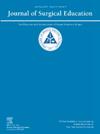2024年骨科住院医师匹配趋势:分级和上升趋势研究
IF 2.1
3区 医学
Q1 EDUCATION, SCIENTIFIC DISCIPLINES
引用次数: 0
摘要
骨科住院医师仍然是美国最具竞争力的专业之一。最近住院医师选择标准的变化,包括美国医疗执照考试(USMLE)第1步过渡到通过/不及格评分,已经将重点转移到其他指标,如第2步临床知识(CK)分数和研究生产力。本研究旨在分析2016年至2024年骨科住院医师匹配竞争力的趋势,包括项目增长、申请人特征和选择指标。方法数据来源于2016 - 2024年全国住院医师匹配计划(NRMP)和匹配报告中的图表结果。指标包括申请人与职位的比例、匹配率、step2 CK分数、研究产出、Alpha Omega Alpha (AOA)会员率,以及来自美国国立卫生研究院(NIH)资助最多的医学院的代表性。线性回归计算年增长率,采用t检验分析组间差异。结果骨科住院医师项目由2016年的163个增加到2024年的218个,岗位由717个增加到916个;在此期间,申请人与职位的比例没有变化。匹配的申请者在step2 CK得分(2016年平均253分,2024年平均257分,p = 0.010)和研究项目数量(2016年平均8.2项,2024年平均23.8项,p = 0.001)上有所增加。AOA会员(34.2%)和顶级医学院代表(33%)保持稳定。值得注意的是,在不匹配的候选人中,MD/PhD申请人的比例不成比例(3.2% vs. 1.3%匹配,p = 0.073)。结论2016 - 2024年骨科住院医师匹配趋势不断演变。虽然AOA成员资格和机构声望等传统指标保持稳定,但对第二步CK分数和研究生产力的日益重视凸显了它们日益增长的重要性。不断增加的项目和职位数量并没有缓解竞争,该专业仍然是高度挑剔的。证据水平本文章由计算机程序翻译,如有差异,请以英文原文为准。
Orthopedic Surgery Residency Match Trends in 2024: Step Scores and Research on the Rise
Background
Orthopedic surgery residency remains 1 of the most competitive specialties in the United States. Recent changes in residency selection criteria, including the transition of the United States Medical Licensing Examination (USMLE) Step 1 to pass/fail scoring, have shifted emphasis toward alternative metrics such as Step 2 Clinical Knowledge (CK) scores and research productivity. This study aims to analyze trends in orthopedic residency match competitiveness from 2016 to 2024, including program growth, applicant characteristics, and selection metrics.
Methods
Data were obtained from the National Residency Matching Program (NRMP) and the Charting Outcomes in the Match reports from 2016 to 2024. Metrics included applicant-to-position ratios, match rates, Step 2 CK scores, research output, Alpha Omega Alpha (AOA) membership rates, and representation from medical schools with the most National Institutes of Health (NIH) funding. Linear regression calculated annual growth rates, and between-group differences were analyzed using t-tests.
Results
The number of orthopedic residency programs increased from 163 in 2016 to 218 in 2024, with positions expanding from 717 to 916; the applicant to position ratio did not change throughout this time. Matched applicants demonstrated an increase in Step 2 CK scores (average 253 in 2016 and 257 in 2024, p = 0.010) and number of research items (8.2 in 2016 and 23.8 in 2024, p = 0.001). AOA membership (34.2%) and top medical school representation (33%) remained stable. Notably, MD/PhD applicants were disproportionately represented among unmatched candidates (3.2% vs. 1.3% matched, p = 0.073).
Conclusion
Trends from 2016 to 2024 reveal an evolving orthopedic residency match. While traditional metrics such as AOA membership and institutional prestige remain stable, increasing emphasis on Step 2 CK scores and research productivity underscores their growing importance. The expanding number of programs and positions has not eased competition, and the specialty remains highly selective.
Level of Evidence
II
求助全文
通过发布文献求助,成功后即可免费获取论文全文。
去求助
来源期刊

Journal of Surgical Education
EDUCATION, SCIENTIFIC DISCIPLINES-SURGERY
CiteScore
5.60
自引率
10.30%
发文量
261
审稿时长
48 days
期刊介绍:
The Journal of Surgical Education (JSE) is dedicated to advancing the field of surgical education through original research. The journal publishes research articles in all surgical disciplines on topics relative to the education of surgical students, residents, and fellows, as well as practicing surgeons. Our readers look to JSE for timely, innovative research findings from the international surgical education community. As the official journal of the Association of Program Directors in Surgery (APDS), JSE publishes the proceedings of the annual APDS meeting held during Surgery Education Week.
 求助内容:
求助内容: 应助结果提醒方式:
应助结果提醒方式:


